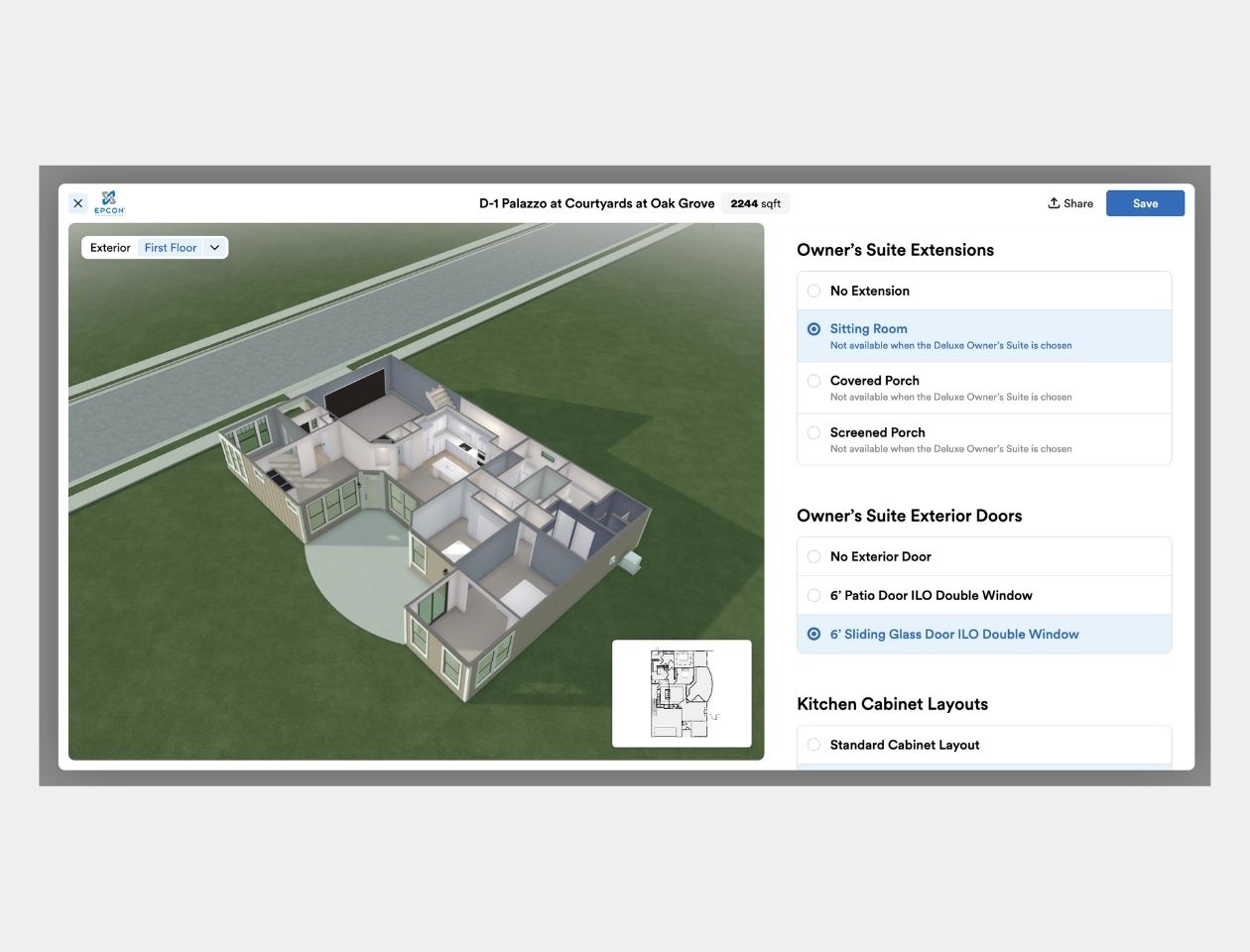"Higharc is fixing a problem that exists in residential design that's systemic ... it's the only solution I've seen in the 23 years I've been in the industry."
Our incredible team makes Higharc a special place to work, helping create the best technology for today's homebuilders. We interviewed Implementation Lead Jason Amador-Locher, a BIM expert who has worked on more than 5,000 homes. Read Jason's story and learn why he joined Higharc below.
Tell me about your background. What were you doing prior to joining Higharc?
Prior to Higharc, I was the head of research and development for a homebuilder in Texas for the last 13 years. We converted from basically 2D drawings to ACA Architecture / BIM and then to Revit. My day to day was a lot of structural framing. So quality control, structural framing, really anything that needed to get done. So I had 34 draftsmen in a huge team working remotely and we were doing about 700 houses a year.
Can you explain some of the biggest pain points the homebuilding industry faces today?
Within the first year of my career, I switched software, which is a pattern throughout my entire career. When I moved to Texas, I was still designing houses in Hawaii and working for my own firm, and I switched softwares on myself. And when the recession hit, I started working for a homebuilder and we switched softwares again. Over the last 13 years, we switched software three times and each one of those switches led to a lot of turnover in the drafting world. I was in a constant state of training people and trying to hit deadlines and make sure that houses are getting done accurately. Simple things like using an Excel spreadsheet to get information from CAD and the formulas are off. Nobody knows it. And all of a sudden every house that month was short of some material. So the last 23 years have been a lot of chaos, coupled with some success, but it gives a fleeting notion that there's no light or a tunnel like there's no end to it.
What brought you to Higharc?
It's hard to quantify why homebuilders aren't adopting technology. I think it's because there hasn't been one single source to provide the solution. We always saw that we had to spend X amount of money on this thing to get this thing to work. And we don't know if they communicate correctly. So with Higharc, it's all in one spot. Higharc is fixing a problem that exists in residential design that's systemic and it's the only solution I've seen in 23 years I've been in the industry. So that is how… how do I put it? It was something that I saw in Higharc that I had never seen before, and I wanted to be a part of it.
The reason I came to Higharc is that Higharc is the next generation, like this is where the industry is going to go. It has to go this way as old ideas of hand drafting are retired. That next generation was something I had never seen, and that's why it was so exciting. I couldn't believe that it was being done. Like I didn't think I'd see it in my lifetime. And so to see it happening was why I came. To be a part of the solution and not perpetuating the problem, right? So hopefully by helping develop Higharc, other folks in this industry won't have to go through what I and a lot of people have gone through for you.
What is Higharc doing for homebuilding, from your perspective?
Typically, design software is a facet of the home building process and it is used to extract information by multiple departments. The building information model approach has been around for a while, but I haven't seen it really work. Different departments have ways that they want to do it and so they use their software and there's errors when that happens.
What Higharc is doing is actually programming houses and the design is a byproduct of that. And by being a byproduct of that, it's more of a holistic approach. So it is a central source of information, but it feeds all facets. So it removes the fragmentation in the process. Those are big pain points. And there's a lot of money involved in all of those pain points.
The scattering of information for homebuilders, where homebuilders offer elevations and options that exist in separate files… Higharc consolidates all of that into one central location so that the variances from human error are very, very minimized.
What do you like about your day to day work so far?
I've never experienced anything like the culture at Higharc. The people at Higharc are pretty amazing. It's like the best of the best have been centralized to work on a solution. So it's inspiring to be a part of that instead of just knowing about people like this that exist to actually be elbow to elbow in the development of this thing. So, you know, in the late nineties, I started working for structural engineers doing high rises and it was exhilarating because everything was unknown to me and I transitioned to high end residential and immediately switched softwares.
What’s one thing that’s surprised you since joining Higharc?
I'm one of the implementation leads on Higharc’s implementation team and at first I thought it was essentially a drafting crew, which it is not. It is definitely not. “Implementation” is using the software and flushing out errors or bugs, which is amazing. Like, if you have an idea at Higharc, just in the short amount of time I've been here, my ideas are listened to and given consideration, which I'm not used to. Dealing with other large software providers those ideas just go into a void, right? So it's exciting to see like, “Oh, Jason came up with this idea, let's do that.” It makes it really exciting. So a 12 hour day, which is rare, feels like 4 hours. In architecture and engineering, praise is nonexistent. So coming to terms with that in my career is that you never hear, “Hey, Jason, good job.” It's always, “there's a problem.” And I just accepted that as a fact. When I finished my first project [at Higharc], people from departments that I didn't even know reached out and said good job. So I was taken aback by that. It's a very supportive culture and people that I wouldn't think to even interact with, I interact with. So it's more of a family kind of a feel here than just a job I have.
I'm also surprised more people aren't using Higharc. I think that that was a bigger surprise. We're new so I can't just expect us to have a huge user base, but I have a feeling that everybody is going to be using it at one point.
Tell us about YOUR home.
I live 20 miles west of Austin, Texas. I have a garden that has a house in it. We're avid gardeners. I commute through my garden to a detached studio where I do all of my work. And on breaks, I get to go out and harvest cucumbers and tomatoes and tend to my garden and yeah, it's a good place to take a break.
And what about your truck?
My daily driver is a 1963 Chevy C10 named Lois. And well, yeah, that's the one thing that, when asked what I couldn't live without, it’s [Lois] because I have some blood [sweat and tears] on it. It's a great truck. It doesn't have AC so my mileage or my range is limited for sure based on hydration.


Watch the abridged version of Jason’s interview below, and check out the rest of our employee interviews at Higharc’s YouTube channel.
See higharc in action
Discover how Higharc can empower your team to conquer change, modernize your buyer experience, and decrease cycle times.
Book a demo



.png)




.png)



.jpg)








%20(1260%20x%20960%20px).jpg)
%20(1260%20x%20960%20px).jpg)

.jpg)

.jpg)


















